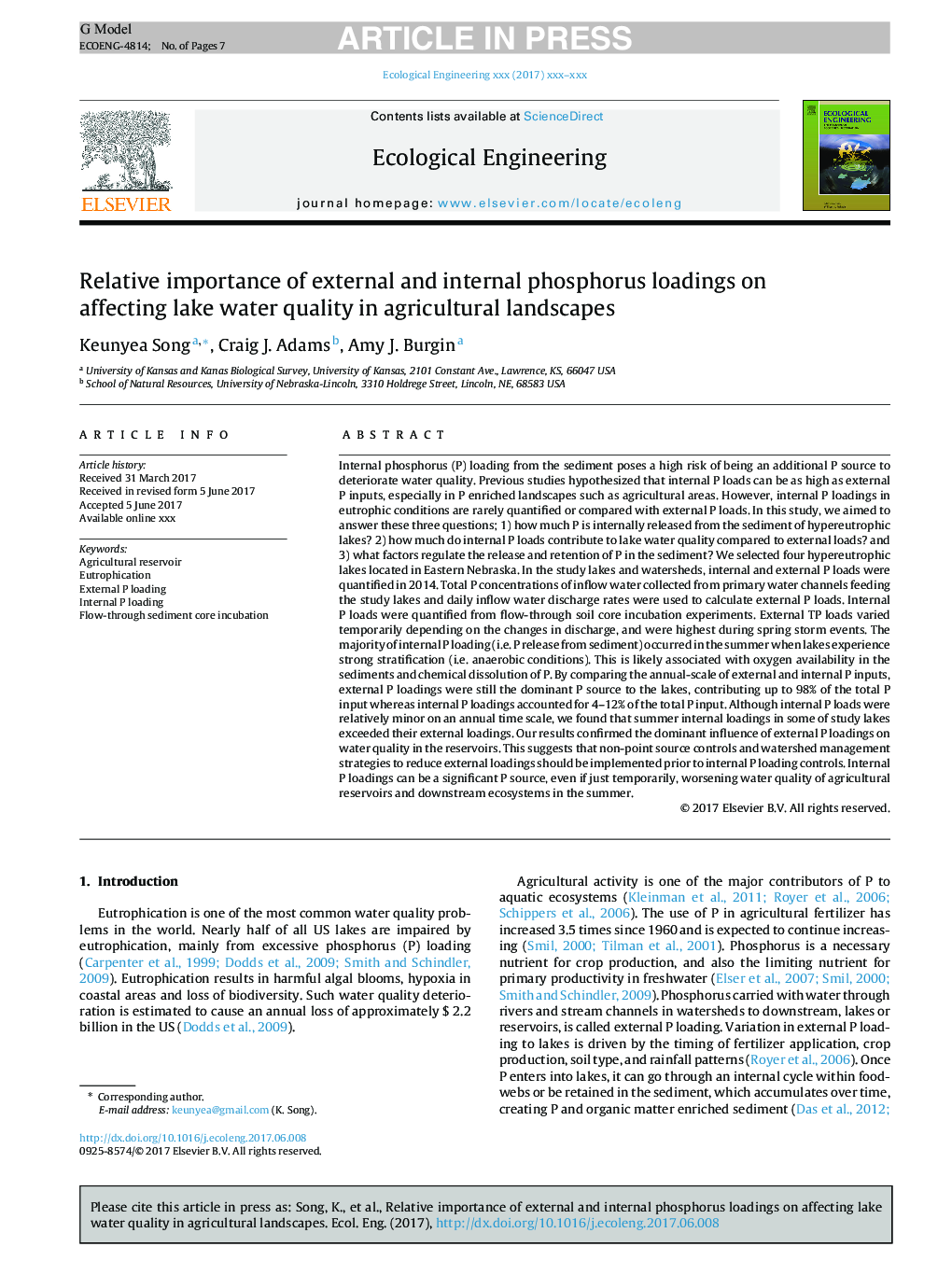| کد مقاله | کد نشریه | سال انتشار | مقاله انگلیسی | نسخه تمام متن |
|---|---|---|---|---|
| 8848187 | 1617994 | 2017 | 7 صفحه PDF | دانلود رایگان |
عنوان انگلیسی مقاله ISI
Relative importance of external and internal phosphorus loadings on affecting lake water quality in agricultural landscapes
ترجمه فارسی عنوان
اهمیت نسبی بارهای فسفر خارجی و داخلی بر تأثیر کیفیت آب دریاچه در مناظر کشاورزی
دانلود مقاله + سفارش ترجمه
دانلود مقاله ISI انگلیسی
رایگان برای ایرانیان
کلمات کلیدی
موضوعات مرتبط
علوم زیستی و بیوفناوری
علوم کشاورزی و بیولوژیک
بوم شناسی، تکامل، رفتار و سامانه شناسی
چکیده انگلیسی
Internal phosphorus (P) loading from the sediment poses a high risk of being an additional P source to deteriorate water quality. Previous studies hypothesized that internal P loads can be as high as external P inputs, especially in P enriched landscapes such as agricultural areas. However, internal P loadings in eutrophic conditions are rarely quantified or compared with external P loads. In this study, we aimed to answer these three questions; 1) how much P is internally released from the sediment of hypereutrophic lakes? 2) how much do internal P loads contribute to lake water quality compared to external loads? and 3) what factors regulate the release and retention of P in the sediment? We selected four hypereutrophic lakes located in Eastern Nebraska. In the study lakes and watersheds, internal and external P loads were quantified in 2014. Total P concentrations of inflow water collected from primary water channels feeding the study lakes and daily inflow water discharge rates were used to calculate external P loads. Internal P loads were quantified from flow-through soil core incubation experiments. External TP loads varied temporarily depending on the changes in discharge, and were highest during spring storm events. The majority of internal P loading (i.e. P release from sediment) occurred in the summer when lakes experience strong stratification (i.e. anaerobic conditions). This is likely associated with oxygen availability in the sediments and chemical dissolution of P. By comparing the annual-scale of external and internal P inputs, external P loadings were still the dominant P source to the lakes, contributing up to 98% of the total P input whereas internal P loadings accounted for 4-12% of the total P input. Although internal P loads were relatively minor on an annual time scale, we found that summer internal loadings in some of study lakes exceeded their external loadings. Our results confirmed the dominant influence of external P loadings on water quality in the reservoirs. This suggests that non-point source controls and watershed management strategies to reduce external loadings should be implemented prior to internal P loading controls. Internal P loadings can be a significant P source, even if just temporarily, worsening water quality of agricultural reservoirs and downstream ecosystems in the summer.
ناشر
Database: Elsevier - ScienceDirect (ساینس دایرکت)
Journal: Ecological Engineering - Volume 108, Part B, November 2017, Pages 482-488
Journal: Ecological Engineering - Volume 108, Part B, November 2017, Pages 482-488
نویسندگان
Keunyea Song, Craig J. Adams, Amy J. Burgin,
